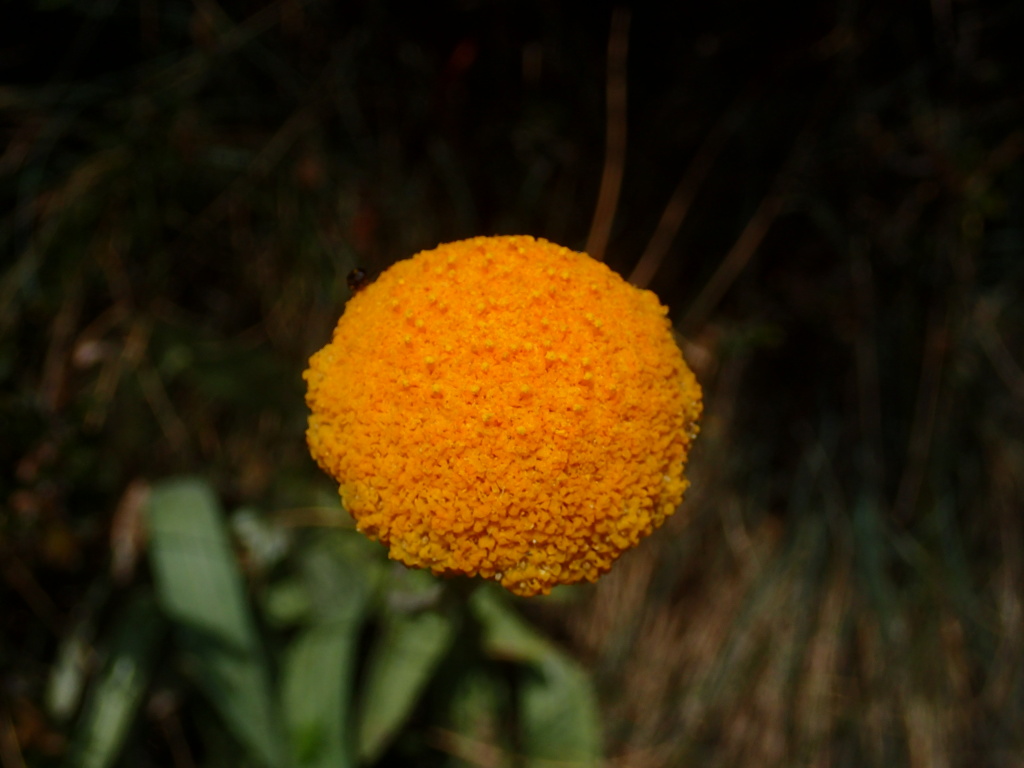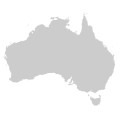Craspedia adenophora
K.L.McDougall & N.G.Walsh Sticky Billy-buttonsErect herb with single flowering scape c. 10–40 cm high; roots thick, tomentose. Leaves mostly basal, obovate-spathulate to oblanceolate-spathulate or narrowly so, 6.5–18 cm long, 8–15(–20) mm wide, acute , midrib and 2–4 secondary veins evident, narrow-attenuate at base, discolourous; adaxial surface dark green with dense glandular hairs, sometimes with loose appressed woolly hairs, particularly on midrib; abaxial surface densely appressed woolly-tomentose with short glandular hairs intermixed. Inflorescence bright to pale yellow, rarely orange, hemispherical to globose, c. 1.5–3.5 cm diam. with c. 50–100 capitula; scape straw-coloured, brown to red-brown with dense glandular hairs, sometimes with appressed silky hairs. Capitula with 5–10 florets; bract subtending capitulum narrowly to broadly ovate, margins narrow, scarious, dark brown, colourless towards base, stereome c. ovate, glandular, woolly. Cypselas 1.5–2.5 mm long; pappus 3.5–5 mm long. Flowers Dec.–Feb.
HNF, VAlp. Locally common in dry to damp grassland and open heaths, often around exposed rock, above 1500 metres throughout most of the Victorian alps (e.g. The Bluff, Mt Buller, Mt Buffalo, Mt Stirling, Snowy Plain) but rarer on the Bogong High Plains.
Craspedia adenophora may be most easily confused with C. maxgrayi which may have leaves that appear discolorous in autumn due to shedding of the hairs on the upper leaf surface prior to withering and being covered by winter snow (McDougall & Walsh 2008). These C. maxgrayi plants may be distinguished from C. adenophora by an absence of glandular hairs on their leaves. Craspedia with discolourous leaves and a few glandular hairs confined towards the tip of the leaf have been found on Mt Buffalo and are suspected to be hybrid plants with C. adenophora as a parent and possibly C. gracilis as the other parent (McDougall & Walsh 2008).
 Spinning
Spinning
